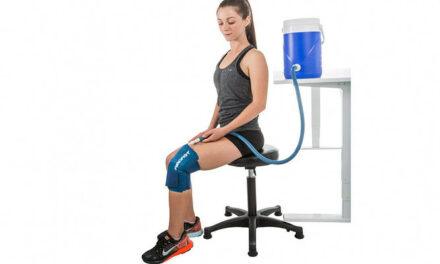Leg pains can range from a dull longer-term ache to severe suddenly appeared pain. Most leg pain can be a result of overuse or minor injuries that are temporary. The pain often recedes within a short time and can be relieved with home remedies.
However, in some cases, leg pain can be a result of serious underlying medical conditions. Therefore, if your leg pain is a ‘sudden severe pain’ or persists for more than 72 hours after applying home remedies and taking pain killers, then you need to see a doctor for proper diagnosis and treatment to prevent the pain from worsening.
In this article, we will be differentiating muscle pain in the leg from other types of leg pains. And then will be listing all the effective home remedies for muscle pain in legs.
Before digging deeper, let’s find us what a leg pain would really mean.
What is Leg Pain?
Leg pain is any form of pain, be it sharp, dull, burning, tingling, numbing, radiating, or aching that you experience or that causes you to discomfort in your legs.
Leg pain can be ‘acute’, or can be ‘chronic’ and persistent. Leg pain can be nonstop or occasional, it may start suddenly or gradually, and it may affect the whole leg or a part of the leg such as your shin, calf, or knee.
The severity of leg pain can be rated from mild to severe on a scale of 1 to 10.
Physical trauma, injuries, and accidents can cause severe leg pain. Severe leg pain may affect your ability to stand or walk and may require medical attention.
However, when the injury results in more of a ‘bearable’ pain, such as from a sprain or strain, a few natural remedies can help to speed up the healing process. The cases where minor leg pain results from intense physical exercise may only require a person to rest in order to recover.
In general, home remedies and changing one’s lifestyle like engaging in exercises, stretching, consuming foods rich in anti-inflammatory properties can help to alleviate your leg pain, but when the pain is severe or persistent, it can be a symptom of a more severe condition.
Common Causes of Leg Pain
Leg pain can be caused by damage or some problem with the body’s musculoskeletal, neurological, and physiological systems.
Most leg pain can be a result of wear and tear, overexertion, or injuries to bones, joints, or to the soft tissues (like the muscles, ligaments, and tendons).
Leg pain can also be a result of problems in your lower spine and can also be caused by poor circulation, blood clots, or varicose veins.
Tip: If you have migraine or headache, that can result in a neck or upper back pain. The link was explored earlier with the remedies for neck and head pains.
Problems of the musculoskeletal system which affects the bones, joints in the hip, knee, or ankle or affect the muscle, tendon, or ligament and cause leg pain includes: stress fractures from strenuous activity, sports injuries, accidents that affect the legs, crepitus, arthritis, compartment syndrome.
Blood vessel (vascular) conditions that cause leg pain include Peripheral Arterial Disease (PAD), deep vein thrombosis (DVT), varicose veins, varicose eczema, cellulitis, and infections. These are all likely to be a medical emergency and need immediate medical attention.
Neurological problems or Conditions which damage the nervous system that causes leg pain include restless legs syndrome, diabetes neuropathy, sciatica, and post-laminectomy syndrome.
Tip: Did you know that muscle pains are common when you are sick? We have a whole article on the topic.
Muscle Pain vs. Other Leg Pains
As noted earlier, muscle pain is only a type of pain of the leg where the pain is coming from an effect to a muscle or muscle structure (ligament, facia…etc). Besides, leg pain can occur due to bone pain and nerve pain.
We have already covered the differences between muscle pain and nerve pain and the differences between muscle pain and bone pain.
Now let’s explore the natural Home Remedies for Muscle Pain in Legs.
Caution: If you have any other health conditions, my advice is to seek professional help than trying home remedies. Note, some home remedies can have an effect on other medical conditions such as diabetes (blood sugar levels) and high blood pressure.
[et_bloom_locked optin_id=optin_3][/et_bloom_locked]
Home Remedies for Muscle Pain in Legs
- Use Cold Compress or Ice Pack
This reduces inflammation, swelling, and pain by reducing blood flow to the injured site. If a ‘pack’ isn’t available, wrap the ice in a towel and place it on the affected areas for 10 to 15 minutes to reduce the pain, repeat this a few more times throughout the day.
- Drink More Water
One of the common causes of leg pain
and muscle cramps is dehydration. You can take care of this by drinking more water throughout the day.
- Elevate Your Legs
When you lift your legs above the heart level, gravity helps to drain blood pressure out of legs, reduce inflammation, and leg pain.
Tip: Pressure-relieving heel protectors can help to prevent pressure ulcers.
- Drink Apple Cider Vinegar
Drink apple cider vinegar because of its analgesic properties can help to soothe inflammation and leg pain. Drink one or two tablespoons of apple cider vinegar on an empty stomach early, first thing in the morning, or mix it into your bathing water (I know that sounds strange!).
- Try Yoga
Yoga is a therapeutic exercise. It can restore, detoxify the body, and speed up healing. For yoga to be effective and to make sure it does not worsen the pain, you have to ensure that you get the poses right. So, it is better to work with a yoga instructor or expert.
- Take a Walk
Walking helps to relieve leg pain by reducing inflammation, boosting blood circulation, and releasing endorphins in your body.
- Eat Foods that are Rich in Potassium and Magnesium
Deficiency in potassium and magnesium can lead to leg pain, and adding food rich with these nutrients to your diet is the best way to resolve it. Load up in food such as bananas, yogurt, fish, whole-grains, dates, baked sweet potatoes, and tomato juice.
- Give Yourself a Warm Compress
It can help to reduce your leg pain If the cause of the pain is poor or lack of blood circulation. Apply some warm compress or heat packs on the affected leg and leave it for 10 to 15 minutes. It meant to loosen your muscles and relieve the pain.
- Take Epsom Salt Baths
This salt is rich in magnesium, which is good for pain relief. Add ½ cup of Epsom salt to lukewarm water in a basin or bucket and soak your leg for 10 – 15 minutes. That should relieve the pain.
- Drink Methi Water or Ginger Water
Methi Water or ginger water is useful for treating leg pain. If you don’t like the ginger water taste, you can try Ginger tea, which is a good option because it has anti-inflammatory properties, which further help to reduce leg pain. Drink this three times a day, every day.
- Try Fenugreek
Grind dry fenugreek leave into powder and mix 1 or 2 teaspoons in water and drink.
- Massage Your Legs with Mustard Oil
Soak 200 to 250 grams of mustard seed in 10 grams of camphor oil. Let it sit in the sun until it starts dissolving. Then, use it to massage your legs until you feel relieved.
- Try Stretching
Stretching can relax and relieve tension from the leg muscles. Stretching helps to loosen up your glutes, hamstring, and decompresses the spine such as the knee to opposite shoulder stretches, sitting pigeon pose, standing hamstring stretch, and sitting spinal stretch. Stretching can help to boosts blood circulation.
- Take Saffron Water
Mix ½ teaspoon of saffron powder to half a cup of boiling water, strain, and drink. It can help to relieve you of your leg pain.
· Take Pain Killers
Pain killers like acetaminophen, paracetamol or non-steroidal anti-inflammatory drugs (like ibuprofen) can help to relieve your leg pain, but consult your doctor, if the pain continues for more than 72 hours.
· Rest
If your leg pain is caused by strenuous activities, then you need to take a break, rest. This will help to prevent more injury, reduce inflammation, and speed up the process of healing.
Nerve Pain and Muscle Pain in Legs in People with Diabetes
Diabetic neuropathy, also known as nerve pain, is the nerve damage that occurs as a result of a diabetic patient not receiving treatment or managing his or her blood sugar, which can affect any part of the body, but it mostly affects the limbs.
When Diabetic neuropathy affects the limbs, it is referred to as diabetic peripheral neuropathy.
Diabetes-related leg pain can also result in numbness and tingling sensation in addition to pain when it affects the leg. If not managed well, it can lead to serious complications and even amputation.
The best remedy for diabetic neuropathy is the prevention of its progression by managing the blood sugar levels well, but once the nerve and muscle pain becomes part of life, the remedy focuses on leg pain management.
[et_bloom_locked optin_id=optin_3][/et_bloom_locked]
Home Remedies for Muscle Pain (and Nerve Pain) in Legs in People with Diabetes
Although medical treatments can help alleviate pain, there are several measures a person can take at home to help alleviate or reduce the muscle leg pain caused by diabetes.
Ø Go for short walks, frequently
Ø Exercise and be active
Regular and moderate exercise can help to improve blood circulation. Physical exercise helps to bring oxygen and nutrients to the legs. This can directly help to reduce the symptoms of diabetic peripheral neuropathy, but before embarking on any form of exercise regimen, first, consult your doctor to make sure if you do not have any heart or blood vessel-related conditions.
Ø Protect your legs at night from discomfort caused by bedding by using a bed cradle for legs.
Ø Eat a balanced diet and foods that help to control your blood sugar level.
This can help a person with diabetic peripheral neuropathy to reduce the pain by preventing the nerve damage from getting worse, and also reduces inflammation. In general, people with diabetes are recommended to eat:
- lean proteins
- complex carbohydrates, like oatmeal or whole-grain pasta and bread
- good fat like olive oil, nuts, or fish
- non-starchy vegetables
- fruits in moderation
Tip: Here is the complete Food List for Type 2 Diabetes, Diet Plan for Diabetic Gastroparesis, and Reactive Hypoglycemia Diet and Food List.
Ø Take Supplements
Sometimes dieting alone is not enough. A person with diabetic neuropathy may need to take supplements to fill any nutritional gap. But before you start taking any, talk to your doctor to see if he/she can recommend supplements depending on your diet or tell you if the supplement may interact with your medication.
Some of the supplements that can help with diabetic neuropathy are vitamin D, vitamin B-12, acetyl-L-carnitine, and alpha-lipoic acid.
Ø Soak your legs in warm water.
Ø Do not smoke or quit smoking. This is because smoking reduces blood circulation.
Ø Do not or control drinking alcohol.
Tip: Essential oils are a must-try remedy to relieve diabetes leg pain.
Muscle Pain due to Exercise
You may be wondering why your muscle aches a day or two after exercise.
Muscle pain after exercise is caused by micro-tears in the muscles. This is as a result of overexerting the muscles, sometimes referred to as delayed onset muscle soreness (DOMS), which occurs mainly when the muscles are not accustomed to exercise or strenuous activities.
However, if you start exercising regularly and gradually increase the duration and intensity of your workouts, your muscles will rebuild and be stronger that you won’t have so much pain the next time you exercise.
Home Remedies for Muscle Pain due to Exercise
Some of the home remedy for muscle pain as a result of exercise are:
- Discontinue the exercise
If you notice that your muscle aches while you are still exercising. In that case, continuing the exercise may cause serious injury to the muscle.
- Sleep
When you sleep, the body produces a higher level of growth hormone, which can help to rebuild the muscle.
- Stretch and squeeze the muscle
When your muscle aches, stretch the muscle with one hand and with the other hand, knead gently and squeeze the center of the muscle.
- Take a cool shower/ bath to reduce muscle pain and stiffness
You can also apply ice/cold packs for 20 to 30 minutes every hour for the first 24 to 72 hours after the exercise, this method is called cryotherapy. It helps to prevent muscle pain by contracting the blood vessels, which reduces blood flow and therefore reducing inflammation.
- Avoid using a heating pad or hot water bottle in the first 24 hours after a serious activity
Although it may feel good to use one, it can increase the muscle pain because it expands the blood vessels and increases circulation and thus inflammation. But if you must use the hot bottle you on your sore muscle, try the contrast therapy by applying the hot pad/bottle for four minutes and an ice pack for one minute. After 72hours, when the inflammation and pain have reduced, you can go for hot baths to help relax the muscles.
- Swim, if you know how to.
Swimming can help to stretch the muscle and ease the pain, and the cold water can helps to reduce inflammation.
- Gently Massage the muscle to ease the pain
Massage does not only feels good but also reduces inflammation by boosting circulation to the tissues.
Tip: Sequential Air Compression Leg Massager and Human Touch Foot And Calf Massager are proven to be effective in relieving pain from fatigued and tensed muscles.
- Warm beef or chicken bouillon
Sipping a cup of warm beef or chicken bouillon before exercise can help to replace the sodium you lose when you sweat, which may help to prevent muscle pain.
- Take a hot bath with Epsom salts (after 24 hours)
Epsom salts contain magnesium, which helps to relieve inflammation and promote the healing of torn muscle, and magnesium is easily absorbed through the skin. In a tub of hot water, add 2 cups of Epsom salts.
- Drink Water
When you exercise, you sweat and maybe dehydrated, and dehydration can cause muscle ache. So you need to drink enough water before, during, and after you exercise or sporting activities but do not overdo it because it can cause a dangerous imbalance in the body’s mineral stores.
- Drink milk before exercise
Drink 2 to 3 glasses of milk a day to get adequate amounts of calcium your body needs. Calcium can help to reduce muscle pain.
- Drink watermelon juice or smoothie
Watermelon is pack with an amino acid called L-citrulline, which may help to reduced muscle cramps.
- Eat one or two Banana daily
This may help to reduce muscle pain because a lack of potassium can cause muscle pain, and a banana has about 450mg of potassium.
- Rosemary
leaves can help to calm inflamed muscle and speed up healing
Rosemary is absorbed easily through the skin, you can use fresh or dried rosemary leaves to make rosemary wash by putting1 ounce rosemary leaves in a 1-pint jar and filling the jar with boiling water. Cover and let it stand for 30 minutes. Dip a piece of clean cloth or small towel into the rosemary wash and place it on the aching muscle. Use these 2 to 3 times a day.
- Cherry juice
Tart cherry juice is believed to contain antioxidant compounds anthocyanins that help reduce muscle pain and discomfort.
Drink 1 to 2 bottles of tart cherry juice a day; its anti-inflammatory properties help to speed up recovery.
[et_bloom_locked optin_id=optin_3][/et_bloom_locked]
When to See a Doctor about Leg Muscle Aches
You need to see your doctor if you are experiencing leg pain, especially with the following associated symptoms.
- The leg is swollen or red.
- Pain accompanied by a fever.
- The Pain only improves when you are resting, but worsen when you walk or do exercise – Go to the hospital or call an ambulance!
- The leg is with a black and/or blue shade.
- Pale and cold – Go to the hospital!
- You think that the leg pain is a result of the medicines you are taking.
- You do not know the reason for your leg pain.
- Leg pain is not responding to home remedies.
- Caused by a deep cut on your leg.
- The leg is red and warm.
- Both legs are swollen, and you are having difficulty breathing – Call the ambulance!
- Let pain is so painful that you cannot walk or stand – Go to the hospital!
- Leg pain is caused by an injury that occurs along with a popping or grinding sound.
- Persistent pain that continues to get worse even after a few days.
- Varicose veins that are causing discomfort
Conclusion
Since leg pain can be a result of a serious condition or serious injuries, ignoring leg pain that is severe and persistent or that occurs with other symptoms can be dangerous because it can be an indication of worsening diabetic neuropathy. Even mild leg pain can be symptoms of peripheral arterial disease (PAD), which is a serious condition because it can increase your risk for heart attack and stroke. So, as a rule of thumb, it is always advisable to see your doctor if you are worried or if you suspect that there is more to your leg pain.
Tip: Electrical muscle stimulation
(EMS) can have a direct effect on relaxing your muscles and soothing any muscle inflammation, TENS can help to treat muscle pain associated with back and leg pain.









0 Comments